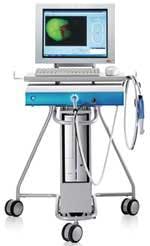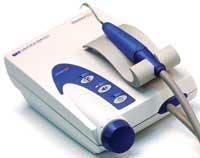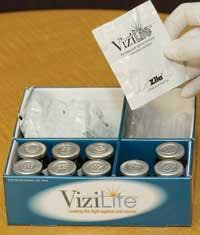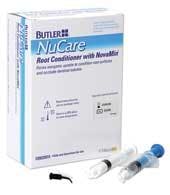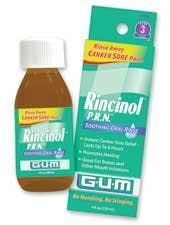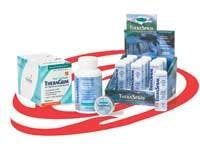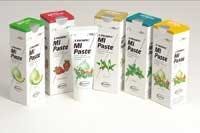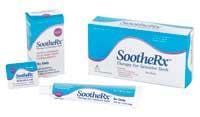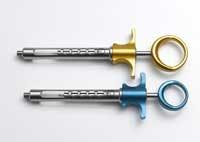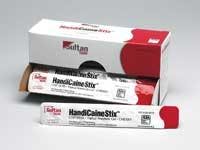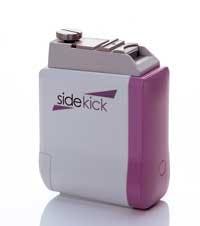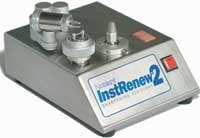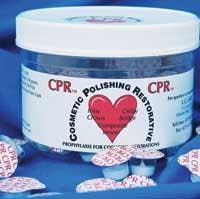Update on Marketplace
High technology continues to define innovative changes in product development.
Technology finds these niches in low-tech dental diagnosis, continuing to amaze dental professionals with the innovations. Five years ago, Diamond General Development Corp. won the Medical Design Excellence Award for a device (Diamond Probe) that measures sulfide concentrations to help pinpoint the presence of periodontal disease. At about the same time, dental literature widely published articles regarding KaVo America’s DIAGNOdent, a laser, which when operated at a specific wavelength, showed healthy and unhealthy tooth enamel at different “fluorescence.” The DIAGNOdent was primarily touted for its ability to help detect occlusal caries - a difficult diagnosis to make with an explorer or bitewings.
Of course, the granddaddy of the marriage between high technology and diagnosis, as it pertains to dental hygiene, remains the Florida Probe, which automated periodontal probing and charting.
The electrified contact between high technology and dental hygiene lights up computer screens everywhere. Any discussion of trends in product development starts with the era of electronic diagnosis.
A little help With the diagnosis
At the 2005 Chicago Midwinter meeting, OMNII Oral Pharmaceuticals introduced its Inspektor Pro system, which, like the DIAGNOdent, incorporates the concept of fluorescence to measure disease activity. The company states that the diagnostic tool operates by “scattering properties of visible light.” The blue light, which is driven by quantitative light-induced fluorescence (or QLF, a more commonly used acronym) technology, “reacts differently as it contacts different defects or anomalies in the tooth.” The light literally penetrates and bounces off the subsurfaces in enamel. The rationale, according to OMNII, is that “active early lesions are often porous and filled with moisture and are thus less transparent than sound enamel and dentine, resulting in a lower fluorescence.”
There are two things noteworthy to dental hygienists about OMNII’s introduction of Inspektor Pro in Chicago. First, the company went out of its way to say that the diagnostic device is “meant to find and help reverse the very early stages of the destructive caries process ... is not meant to be used as a tool to ... provide more restorative work for dental practices.”
Secondly, QLF highlights by-products of anaerobic bacteria, whether it has affixed to biofilm, plaque, calculus, or lesions. An example provided by the company showed the presence of bacterial activity underneath a sealant.
The Inspektor Pro joins the ranks of other recent diagnostic technology emerging in dental offices. Ultradent’s DetecTar received FDA clearance in November 2003 after being introduced at the 2003 Chicago Midwinter. The LED light on the probe enhances the diagnosis of the presence of calculus on root surfaces, much more so than a periodontal probe. The subgingival fiber optic probe “detects” light that is reflected off calculus. A beeping sound alerts the dental hygienist and patient to the presence of calculus as small as 0.1mm in size, and also can be used to check sites after scaling and root planing.
Zila’s ViziLite emerged during the same time period as the DetecTar. The product capitalized on an increased awareness within the profession about the need to conduct oral cancer screenings more routinely. ViziLite is not really a “machine” (as some of the other high tech devices above) as it is a painless, non-invasive technology that improves the dental professional’s ability to visualize and evaluate suspicious areas at the earliest stages - areas that may be unseen by the clinician’s unaided vision. Using ViziLite in conjunction with the standard oral cancer examination gives dental professionals a higher degree of confidence in their oral screening protocol. The oral cavity is rinsed with 1 percent acetic acid solution, which is followed by activating the lightstick by snapping it, and then using the lightstick in the retractor provided to highlight suspicious sites that may require further investigation.
The CRA Foundation Newsletter reported in its January 2005 issue, “Investigating suspicious lesions is potentially life-saving, and ViziLite facilitates the identification of suspect sites.”
Another recent, more “low-tech” diagnostic aid is the Saliva-Check by GC America. Introduced in late 2004, the company promoted the tool as a way to calculate caries risk and to alter home-care strategies. A series of six tests take approximately 10 minutes to complete. A patient’s hydration level is measured, as well as the saliva’s pH and consistency. A dental hygienist can use the information to more accurately recommend fluoride supplements, for example, or recommend lifestyle changes such as increasing water intake or decreasing caffeine.
Patient education has also received some assistance from the high-tech front. An interesting one emerged at the 2005 Chicago Midwinter. Reality Engineering’s MedVisor/dental allows 3-D animation on a computer screen to help explain procedures. For the dental hygienist, the highlighting tools included with MedVisor/dental allow interactive drawing on the screen to explain home-care procedures, for example.
Although CAESY’s patient education systems have been a leader in the field for a number of years, Patterson Dental acquired CAESY in May 2004. Recently, Patterson introduced CAESY Enterprise 5.0, which features some enhancements over earlier versions, including facilitating the communication between the patient education software and Patterson’s practice management software (Eaglesoft). But the intriguing multimedia galleries that define CAESY also have new presentations that are available in Enterprise 5.0.
Got comfort in mind?
Many of the pharmacological agents introduced in dentistry recently feature patient “comfort” as a primary benefit. Sunstar Butler, for example, introduced NuCare Root Conditioner that relieves the hypersensitivity occurring with exposed root dentin. The product, which is applied with a syringe, contains NovaMin, an ingredient used in medical settings as well. For dentistry, NovaMin expedites the formation of a protective layer of hydroxycarbonate apatite dentin material on exposed root surfaces. Information about NovaMin specifically can be obtained from www.novamin.com.
NuCare, which will include a prophy paste under the brand name by this summer, follows on the heels of Sunstar Butler’s Rincinol PRN that was introduced last year. Rincinol PRN is an over-the-counter product that provides soft-tissue pain relief from canker sores, gingival irritation from procedures such as scaling and whitening, orthodontia, and post-oral surgery.
OMNII also incorporates NovaMin in one of its products - SootheRx. The prescription toothpaste employs NovaMin in much the same way NuCare does. The ingredient relieves sensitivity by occluding dentinal tubules with hydroxyapatite material. Patients brush twice daily with SootheRx for a two-week period instead of their usual toothpaste.
Remineralization continues to be a focal point for hygiene and home-care strategies. GC America introduced Prospec MI Paste in November 2004. The paste can be applied through a prophy cup or tray. The featured ingredient is Recaldent, a milk-derived protein that strengthens enamel. OMNII, on the other hand, features xylitol in its TheraMints. The company provides data on how the chewing gum also strengthens teeth. Another example is the presence of xylitol in Sultan Dental’s Topex White Care, a desensitizing gel with 1.1 percent neutral sodium fluoride that is used after teeth whitening.
Of course, a benefit of fluoride varnish is to prevent and treat hypersensitivity. In recent months, Dentsply (AllSolutions), Discus Dental (Fluoridex Lasting Defense), Medical Products Laboratories (VarnishAmerica), OMNII (CavityShield) and Sultan Dental (Durashield) have introduced 5 percent neutral sodium fluoride formulas.
What’s up With the anesthesia guys?
Not many products have generated as much conversation in recent months as Dentsply’s Oraqix. The product is an offshoot of Dentsply’s 2001 acquisition of AstraZeneca. Since it is an anesthetic composed of lidocaine and prilocaine, questions surface about whether hygienists can use the product in states where anesthesia is not allowed. The tricky part of the question lies in the fact that Oraqix is a gel that is inserted into a pocket, numbing the surrounding gingiva for approximately 20 minutes.
The insertion is accomplished through the Oraqix Dispenser, which is not a needle but a blunt-tip applicator. The anesthesia was specifically designed for adult patients who required localized anesthesia in periodontal pockets during scaling or root planing.
For the ergonomically challenged, Septodont introduced the Septodont Petite aspirating syringes in 2004, featuring a more compact design for dental hygienists (as well as dentists with smaller hands). The design includes a smaller ring for the thumb, a smaller finger grip, and the length of the plunger is shorter.
Sultan Dental, which produces Topex topical anesthetic gels with 20 percent benzocaine, recently introduced HandiCaine Stix. The premeasured, self-contained units deliver .40g of gel. The single-unit packaging is also beneficial for patients’ “take-home” usage to alleviate the pain of oral lesions, prosthetics, and orthodontic appliances. The available flavors are cherry and pina colada.
The sharper edge
Hu-Friedy and American Eagle have introduced “technology” that prolong the sharpness of instruments produced by the companies. In April, Hu-Friedy launched EverEdge Technology for the company’s scalers and curettes. The EverEdge instruments feature a new stainless steel alloy and undergo “proprietary heat treat and cryogenic processing” to retain edge retention and wear characteristics during the “entire life of the instrument,” according to Hu-Friedy.
XP technology, which was derived from military applications on aircraft, is Amercan Eagle’s brainchild. The ceramic metal reportedly lasts up to three to four months without any sharpening at all. Evaluators for both The Dental Advisor and Clinical Research Associates have already agreed with the company’s claim that the thinner blades “last so long, without a need to resharpen.”
In early 2004, Hu-Friedy also launched its Sidekick, a visually captivating device that vaguely resembles a trendy electric shaver. The compact instrument sharpener is also cordless, powered by batteries. The top of the device has “guide channels” and a “vertical backstop” to help control the blade’s angulation.
Nordent Manufacturing introduced its sharpener, InstRenew, in 2002. This year, the company came out with InstRenew2, which is essentially the same system but with a unique twist (pun intended). The revised sharpening system incorporates a new clamp that quickly allows users to position instruments at the common 75-degree angle between the blade face and lateral surface.
If traditional methods are still desired, the low-tech side of instrument sharpening has seen a couple of new developments recently. American Eagle Instruments recently presented Simply Sharp, and ADMT put together The Sharpenator with its Canadian partner, D-Sharp. The ceramic sapphire stone of Simply Sharp does not require lubrication. One surface is extra-fine while the other side is coarse. The Sharpenator is a sharpening kit with a high-tech angle - an interactive CD training course that refreshes the memories of veteran dental hygienists with a variety of tips and suggestions.
Smoother all the time
The formulations for prophy pastes continue to evolve, often aimed at protecting the quality of restorative treatment. As mentioned above, Sunstar Butler’s pumice-free NuCare will be launched next summer. The company believes the NovaMin combination of calcium, phosphate, silica, and sodium will effectively replace pumice in cleaning enamel, including restored surfaces. Also, as referred to above, Sultan Dental’s usage of xylitol in its preventive care products has made its way into the list of ingredients for Topex Brilliance™ polishing paste, which is also recommended for polishing various restorations.
In recent years, 3M Dental (Clinpro), Young Dental (D-Lish), Dentsply (NuPro Shimmer), and Ortek (Proclude) have introduced pastes aimed at specific patient groups or offering alternatives to traditional pumice-based formulations. The best example of a “specialty paste” may be a product introduced by California-based I.C. Care. The company’s CPR (Cosmetic Polishing Restorative) is designed for “esthetic enhancement of composite or porcelain restorations.” The Summer 2004 Journal of Cosmetic Dentistry said of CPR, “This product is similar to diamond pastes, with the exception that it is ‘white’ instead of ‘gray,’ eliminating the possibility of staining the edges of restorations. As the particle size of CPR is very small, CPR will remove softer material without scratching the material.”
An interesting contrast to many of the specialty pastes is Preventech’s Nada. The product’s name means “nothing” in Spanish, and the relevance of the name refers to the lack of fluoride, flavor, or oils. The company, which also produces the popular Next brand of prophy paste, states Nada can be used before procedures such as “acid etching for sealants, composite bonding, and application of orthodontic brackets.” From a dental hygienist’s perspective, the lack of the aforementioned ingredients also has an appeal to certain groups of patients who dislike or are intolerant of those ingredients.


